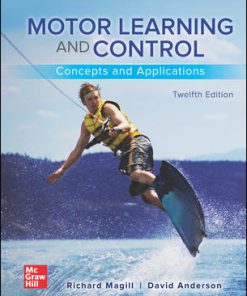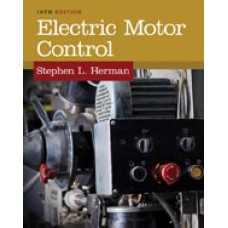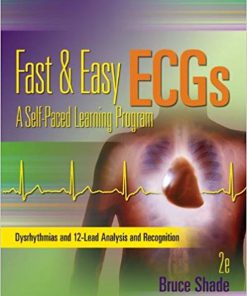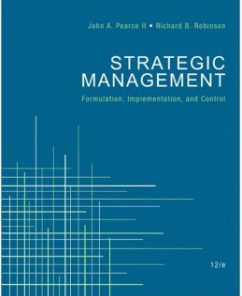Motor Learning and Control, 9th Edition Test Bank – Richard A. Magill
$35.00 Original price was: $35.00.$26.50Current price is: $26.50.
Motor Learning and Control, 9th Edition Test Bank – Richard A. Magill
This is completed downloadable of Motor Learning and Control, 9th Edition Test Bank – Richard A. Magill
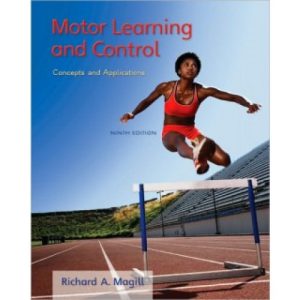
Product Details:
- ISBN-10 : 0073523801
- ISBN-13 : 978-0073523804
- Author: Richard A. Magill
The text provides an introductory study of motor learning and control for students who aspire to become practitioners in exercise science, physical education, and other movement-oriented professions. Magill opens with an introduction to motor skills and control, continues through attention, memory, and learning, and ends with a discussion of instruction, feedback, and practice methods. The text’s strong research base, clear presentation and practical applications will help students build a solid foundation in motor skills and prepare them for further exploration on their own.
Table of Content:
Preface
vii
Dedication
xiv
Unit One Introduction to Motor Skills and Abilities
1(62)
The Classification of Motor Skills
2(20)
Application
2(1)
Discussion
3(19)
Skills, Actions, and Movements
4(3)
One-Dimension Classification Systems
7(4)
Gentile’s Two-Dimensions Taxonomy
11(11)
The Measurement of Motor Performance
22(26)
Application
22(1)
Discussion
23(25)
Reaction Time
24(4)
Error Measures
28(5)
Kinematic Measures
33(3)
Kinetics
36(2)
EMG
38(1)
Brain Activity Measures
39(3)
Measuring Coordination
42(6)
Motor Abilities
48(15)
Application
48(1)
Discussion
48(15)
Ability and Motor Ability
49(14)
Unit Two Introduction to Motor Control
63(130)
Neuromotor Basis for Motor Control
64(17)
Application
64(1)
Discussion
65(16)
The Neuron
65(2)
The Central Nervous System
67(9)
The Neural Control of Voluntary Movement
76(5)
Motor Control Theories
81(27)
Application
81(1)
Discussion
82(26)
Theory and Professional Practice
83(1)
Motor Control Theory
83(5)
Open-Loop and Closed-Loop Control Systems
88(2)
Two Theories of Motor Control
90(13)
The Present State of the Control Theory Issue
103(5)
Sensory Components of Motor Control
108(27)
Application
108(1)
Discussion
109(26)
Touch and Motor Control
109(2)
Proprioception and Motor Control
111(8)
Vision and Motor Control
119(3)
Investigating the Role of Vision in Motor Control
122(3)
The Role of Vision in Motor Control
125(10)
Performance and Motor Control Characteristics of Functional Skills
135(34)
Application
135(1)
Discussion
136(33)
Speed-Accuracy Skills
136(6)
Prehension
142(4)
Handwriting
146(2)
Bimanual Coordination Skills
148(2)
Locomotion
150(8)
Catching a Moving Object
158(3)
Striking a Moving Object
161(8)
Action Preparation
169(24)
Application
169(1)
Discussion
170(23)
Action Preparation Requires Time
170(1)
Task and Situation Characteristics Influencing Preparation
170(9)
Performer Characteristics Influencing Preparation
179(2)
What Occurs during Preparation?
181(12)
Unit Three Attention and Memory
193(54)
Attention as a Limited Capacity Resource
194(27)
Application
194(1)
Discussion
195(26)
Attention and Multiple Task Performance
196(6)
The Dual-Task Procedures for Assessing Attention Demands
202(1)
Focusing Attention
203(3)
Attention and Automaticity
206(1)
Visual Selective Attention
207(3)
Visual Search and Motor Skill Performance
210(5)
Training Visual Search Strategies
215(6)
Memory Components, Forgetting, and Strategies
221(26)
Application
221(1)
Discussion
222(25)
Memory Structure
222(1)
Working Memory
223(4)
Long-Term Memory
227(3)
Remembering and Forgetting
230(1)
Assessing Remembering and Forgetting
230(3)
The Causes of Forgetting
233(3)
Movement Characteristics Related to Memory Performance
236(2)
Strategies that Enhance Memory Performance
238(4)
Practice-Test Context Effects
242(5)
Unit Four Introduction to Motor Skill Learning
247(60)
Defining and Assessing Learning
248(17)
Application
248(1)
Discussion
248(17)
Performance Distinguished from Learning
249(1)
General Performance Characteristics of Skill Learning
249(1)
Assessing Learning by Observing Practice Performance
250(4)
Assessing Learning by Retention Tests
254(2)
Assessing Learning by Transfer Tests
256(1)
Assessing Learning from Coordination Dynamics
257(1)
Practice Performance May Misrepresent Learning
258(7)
The Stages of Learning
265(24)
Application
265(1)
Discussion
266(23)
The Fitts and Posner Three-Stage Model
266(1)
Gentile’s Two-Stage Model
267(4)
Performer and Performance Changes across the Stages of Learning
271(11)
A Performer Characteristic that Does Not Change across the Stages of Learning
282(1)
Expertise
283(6)
Transfer of Learning
289(18)
Application
289(1)
Discussion
290(17)
What Is Transfer of Learning?
290(1)
Why Is Transfer of Learning Important?
290(2)
Why Does Positive Transfer of Learning Occur?
292(4)
Negative Transfer
296(2)
Bilateral Transfer
298(9)
Unit Five Instruction and Augmented Feedback
307(62)
Demonstration and Verbal Instructions
308(24)
Application
308(1)
Discussion
309(23)
Demonstration
309(5)
The Neural Basis for Observational Learning: Mirror Neurons in the Brain
314(6)
Verbal Instructions and Cues
320(12)
Augmented Feedback
332(37)
Application
332(1)
Discussion
333(36)
The Feedback Family
334(1)
Types of Augmented Feedback
334(2)
The Roles of Augmented Feedback in Skill Acquisition
336(1)
How Essential is Augmented Feedback for Skill Acquisition?
337(3)
The Content of Augmented Feedback
340(6)
Types of Knowledge of Performance
346(6)
Timing Issues Related to Augmented Feedback
352(3)
The KR-Delay and Post-KR Intervals
355(4)
Frequency of Presenting Augmented Feedback
359(2)
Techniques that Reduce Augmented Feedback Frequency
361(8)
Unit Six Practice Conditions
369(72)
Practice Variability and Specificity
370(23)
Application
370(1)
Discussion
371(22)
The Future Performance Benefit of Practice Variability
371(1)
Implementing Practice Variability
372(3)
Organizing Variable Practice
375(9)
Accounting for the Contextual Interference Effect
384(1)
Practice Specificity
385(8)
The Amount and Distribution of Practice
393(16)
Application
393(1)
Discussion
394(15)
Overlearning and Learning Motor Skills
395(2)
The Overlearning Strategy Can Lead to Poor Test Performance
397(1)
Overlearning and Other Practice Variables
398(1)
The Distribution of Practice
399(1)
Defining Massed and Distributed Practice
399(1)
The Length and Distribution of Practice Sessions
399(5)
The Intertrial Interval and Practice Distribution
404(5)
Whole and Part Practice
409(18)
Application
409(1)
Discussion
410(17)
Skill Complexity and Organization
410(2)
Practicing Parts of a Skill
412(10)
An Attention Approach to Involving Part Practice in Whole Practice
422(5)
Mental Practice
427(14)
Application
427(1)
Discussion
428(13)
Two Roles for Mental Practice
428(1)
Mental Practice Aids Skill Acquisition
429(5)
Mental Practice Aids Performance Preparation
434(1)
Why Is Mental Practice Effective?
435(1)
Mental Practice and Imagery Ability
436(5)
Glossary
441(9)
Name Index
450(8)
Subject Index
458
People Also Search:
motor learning and control 9th edition
motor learning and control
motor learning and control 9th edition testbank download pdf
motor learning and control 9th edition download scribd
You may also like…
Solution Manual
Solution Manual for Accounting for Decision Making and Control 9th Edition Jerold Zimmerman
Solution Manual








